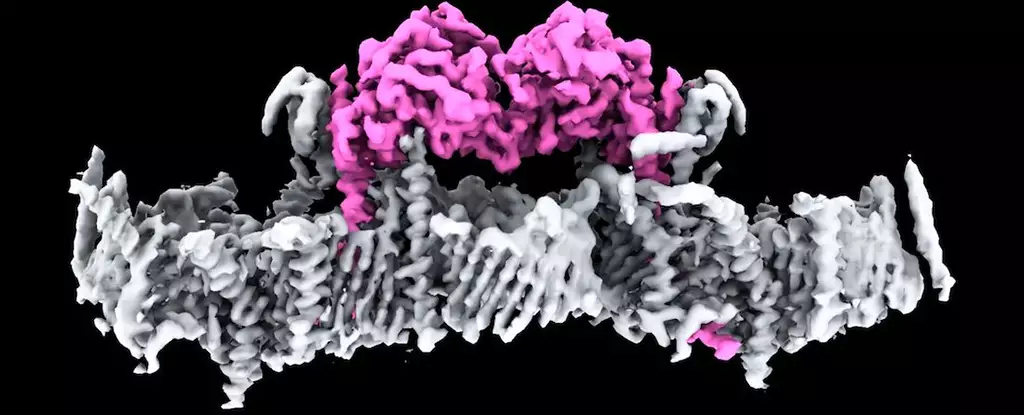For over twenty years, the scientific community has grappled with the intricacies of Parkinson’s disease, a neurodegenerative disorder that robs individuals of their motor skills and independence. Recent breakthroughs, particularly those illuminating the role of mitochondrial proteins like PTEN-induced putative kinase 1 (PINK1), demonstrate that our understanding of the disease’s mechanisms is still developing. Researchers at the Walter and Eliza Hall Institute of Medical Research (WEHI) have recently unveiled groundbreaking insights into PINK1, revealing how its dysfunction potentially catalyzes the disease’s onset. This work opens up new avenues for therapeutic interventions that could fundamentally alter the course of Parkinson’s.
The Structural Revelation of PINK1
Utilizing state-of-the-art imaging technology, such as cryo-electron microscopy combined with mass spectrometry, scientists were able to decipher the structure of PINK1—previously shrouded in enigma. Understanding how PINK1 interacts with mitochondria is pivotal, considering that these organelles are the powerhouse of the cell and critical for energy production. The research indicates that healthy PINK1 travels within mitochondria to perform its maintenance duties effectively, like a diligent worker ensuring operational continuity. However, when mutations occur in its gene, PINK1 fails to function properly, resulting in dysfunctional mitochondria that could lead to neuronal death and, ultimately, Parkinson’s disease.
The Role of the TOM-VDAC Complex
A particularly interesting aspect of this research is the identification of the TOM-VDAC protein complex, which acts as a docking site for PINK1. The interaction between PINK1 and this complex is crucial because it governs how PINK1 recognizes damaged mitochondria. When PINK1 successfully binds to these damaged sites, it triggers a cascade of events culminating in the degradation and recycling of defective mitochondria—a process that is essential to maintain cellular health, especially in energy-demanding brain cells. In the absence of functional PINK1, damaged mitochondria accumulate, setting a dangerous stage for neurodegenerative processes to unfold. Thus, this complex can potentially be targeted in therapeutic strategies, signifying a monumental shift in how we might combat this progressive disorder.
Implications for Parkinson’s Research and Treatment
David Komander, a key figure in the WEHI study, emphasizes the importance of these findings, suggesting that this knowledge about PINK1 provides fresh insights into how to ‘switch it on’. This ability to manipulate PINK1 function could lead to innovative treatments that not only slow the progression of Parkinson’s but might also offer potential preventative strategies for those genetically predisposed to the disease. By illuminating the structural dynamics of PINK1 in the context of mitochondrial health, researchers are paving the way for novel pharmacological approaches that can enhance mitochondrial quality control mechanisms.
Understanding Genetic Factors in Parkinson’s
The complexity of Parkinson’s disease arises not only from the dysfunction of single proteins like PINK1 but also from a web of genetic and environmental variables that intertwine in unpredictable ways. By focusing on PINK1, this research contributes to a broader understanding of the shared pathways that lead to neurodegeneration. The discovery of how specific mutations influence PINK1’s functionality provides a new lens through which researchers can examine the multifaceted nature of Parkinson’s—an understanding that is crucial as we explore polygenic risk factors and increasingly sophisticated biotechnological interventions.
A Collective Quest for Solutions
As we stand at this critical junction in Parkinson’s research, the work done by the WEHI team is more than a mere academic milestone; it is a beacon of hope for millions affected by this debilitating illness. The journey to unravel the mysteries of complex diseases demands a collective effort from various disciplines, and findings like those regarding PINK1 reinforce the necessity of collaboration in scientific inquiry. Each breakthrough not only enriches our knowledge but also reignites hope in the hearts of patients and families, reminding us of the potential for tomorrow’s therapies to transform lives. As more researchers delve into the cellular underpinnings of neurodegenerative diseases, the promise of innovative treatments becomes increasingly tangible, potentially changing the narrative around Parkinson’s disease forever.

